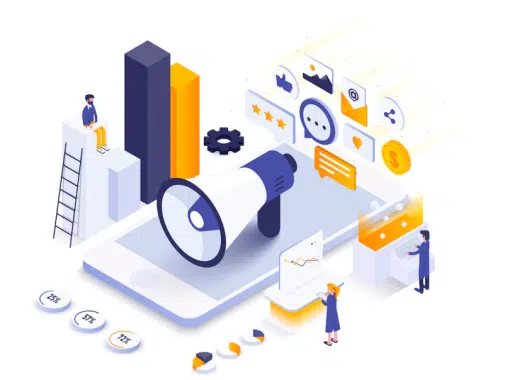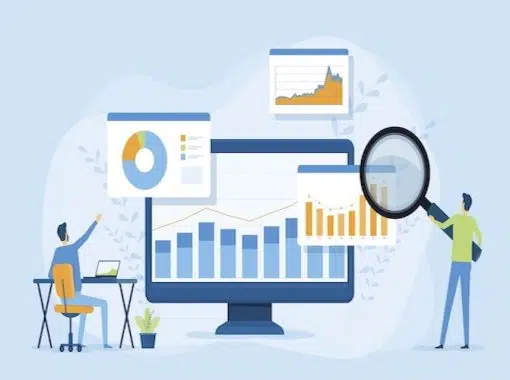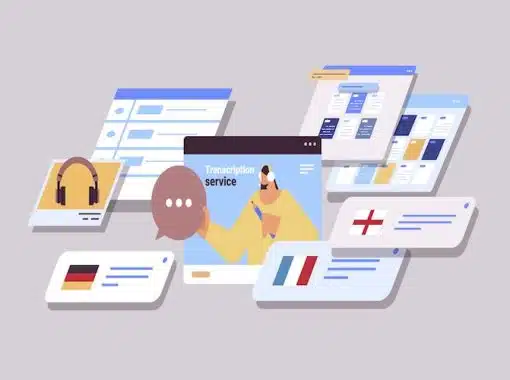
While businesses definitely vary and B2B marketing techniques vary with them, the goals of B2B marketers are the same. It doesn’t matter what approach you use, the type of products or services you sell, or where you are located. Reaching key decision-makers and influencing their purchase decisions is part of your job.
Digital content is already a proven way to reach B2B decision-makers, but content marketing is not as simple as creating something and hoping it will be read or viewed. Every business needs a content strategy. In this article, we look at how B2B buyers consume content and help you create an effective B2B content marketing strategy.
Table of Contents
- Diversify Your Content Portfolio
- Create Content that Draws Them In
- Make Consuming Content an Experience
- Create Content for Each Stage in the B2B Buying Funnel
Diversify Your Content Portfolio
Not everyone involved in the B2B decision-making process is created the same. They have different roles, pain points, and ways of consuming information. The types of content that reach a part of this target audience won’t reach others.
Some go directly to a vendor’s website when looking for thought leadership content like white papers and case studies. Others wondering about how industry trends affect their business may go directly to internet search. Still, others will leverage social media sites like LinkedIn to discover other decision-makers’ thoughts.
And the vast majority will search out a variety of sources for content during their buying journey. On average, buyers consume 13 pieces of content before they make a B2B purchase. This means you need to create a variety of quality content to reach them, including:
- Content you own: Your business should have a website, and you can use a blog as a place to start and host your white papers there.
- Editorial content: Work with publications in your industry to provide high-quality vendor-agnostic content that addresses the needs of your target audience.
- User-generated content: Decision-makers are concerned about how others use your product or service, so getting your current customers involved and encouraging online reviews is important.
- Social media conversations: Engage with your customers on social media to show that there are real people behind your brand.
- Different formats: Include more than text-based content in your marketing strategy. Webinars can make your prospects feel like they are meeting with you in person. Video content can reach prospects that are too busy to read.
Create Content that Draws Them In
LinkedIn and Edelman’s research found that B2B decision makers use thought leadership content to vet a company they are considering doing business with. This type of content uses your brand’s experience and passion to answer the questions and address the pain points of your target audience.
C-suite executives want to know how your product or service can help them both at a human level and at an analytical level, with metrics that tell them why they should choose you. This means charts, graphs, and other data visualizations that showcase your solution.
Make Consuming Content an Experience
When you focus on your B2B customer’s experience, a piece of content does not stand alone. It is part of an overarching content strategy that guides your prospects through their buying process.
The expectations of all consumers, including B2B buyers, have changed. When they consume information, they seek a consistent and intelligent experience relevant to them. Content must reach them on the right touchpoint at the right moment and be readily available, without having to fill out long forms. Any roadblock can interrupt the experience.
Create Content for Each Stage of the B2B Buying Funnel
We have already looked at how using a variety of content types and formats is important to a B2B marketing strategy. But there is another type of variety your content needs. It must be able to reach B2B buyers at each stage of the funnel:
- Problem identification
- Problem exploration
- Requirements building
- Supplier selection
- Validation
- Consensus creation
At the top of the sales funnel, your prospects have just discovered they have a problem and are looking for a solution. Here you want to provide information to help them troubleshoot their problem and remember that a hard sell will turn them away.
In the middle of the funnel, the B2B buyer knows the problem and has a handle on the available solutions. This is where you provide content that answers why they should buy from you with case studies, webinars, and other content to showcase your products and services.
At the bottom of the funnel is where conversions happen. At this point, the right piece of information could close the sale. Demos, consultations, free trials, and user guides work well here.
You need a strategy acknowledging how they consume content to reach decision-makers with your B2B content marketing efforts. You need content that draws them in by providing both a human and analytical aspect with graphics that tell a story, and it should provide a consistent experience. You also need a variety of content, both in type, format, and the stage of the buying process it targets.
Content marketing has moved from the “arts and crafts department” to a critical function that can outperform other types of marketing. In fact, 71% of B2B marketers say it will be more important in 2023 than last year. The tips above will help you get started in the right direction, reach more decision-makers, and make more sales.






